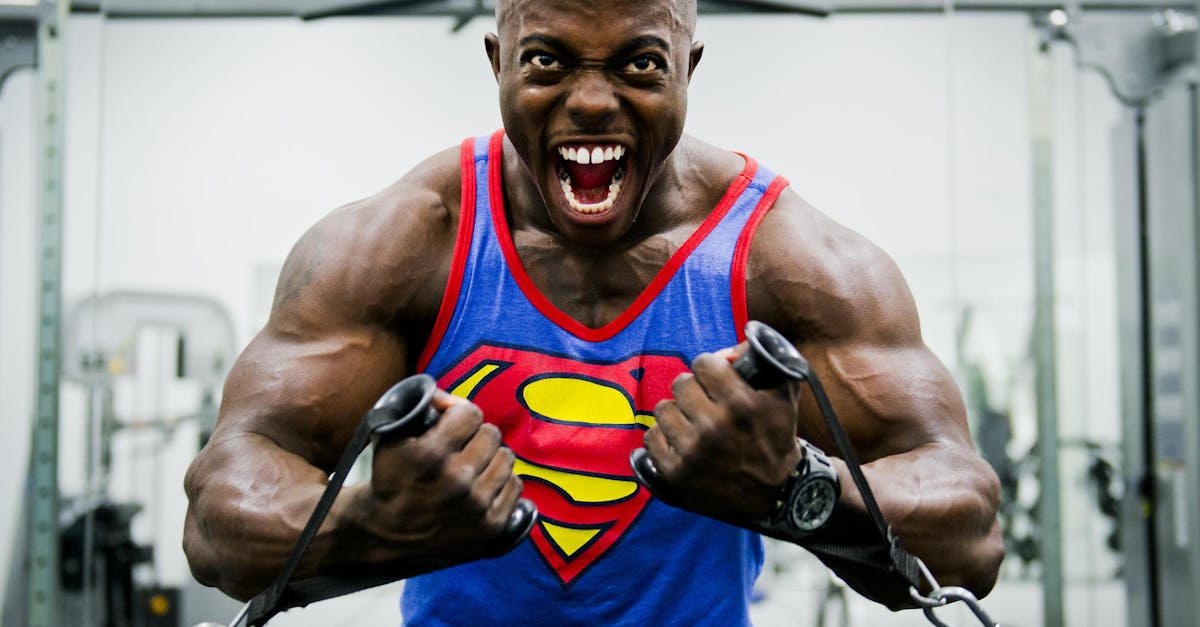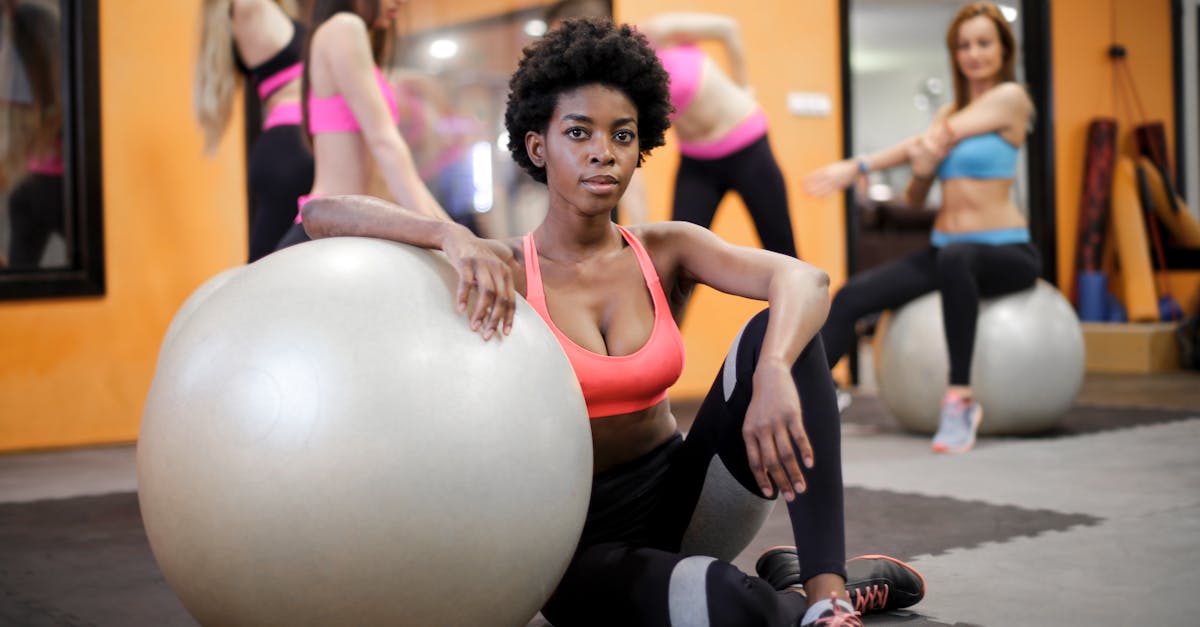Introduction
Male body shaming is a pervasive issue that often goes unnoticed. While it's commonly associated with women, men also face unrealistic expectations and negative comments about their bodies. This can have a significant impact on their mental health and self-esteem.
It's important to recognize that we all participate in male body shaming in some way, whether it's through our own negative self-talk or by perpetuating harmful stereotypes. By understanding the ways in which we contribute to this cycle, we can work towards breaking it.
In this article, we'll explore six common ways in which male body shaming occurs and discuss how we can end the cycle. From comparing men to unattainable standards to sexualizing their bodies, we'll examine the harmful effects of these behaviors and promote body positivity and respect.
It's time to start the conversation about male body shaming and work towards creating a more inclusive and accepting society. By taking action and promoting body diversity, we can help break the cycle and create a world where everyone feels comfortable and confident in their own skin.
Table of Content
- Comparing Men to Unattainable Standards
- Judging Men for Their Weight
- Labeling Men as "Too Muscular" or "Not Masculine Enough"
- Focusing on Men's Hair Loss
- Sexualizing Men's Bodies
- Conclusion
Comparing Men to Unattainable Standards
Comparing Men to Unattainable Standards
Men are often compared to unattainable standards in the media, which can create unrealistic expectations and lead to body shaming. From chiseled abs to perfectly groomed facial hair, men are bombarded with images that promote a narrow definition of what it means to be attractive. These standards are often perpetuated by popular media, including advertisements, movies, and television shows.
The harm caused by these unattainable standards cannot be overstated. Men who do not fit the mold may feel inadequate or ashamed of their bodies, leading to negative impacts on their mental health and self-esteem. It is important to promote body positivity and celebrate diversity in all forms.
One way to combat this issue is to challenge the media's portrayal of men. We can start by supporting brands and media outlets that promote body diversity and inclusivity. We can also speak out against harmful messages and call for change. By doing so, we can help create a world where all men feel comfortable and confident in their own skin.
It is important to remember that everyone is unique and has their own strengths and weaknesses. We should celebrate these differences rather than trying to conform to unrealistic standards. By embracing diversity and promoting body positivity, we can help break the cycle of male body shaming and create a more inclusive society.

Judging Men for Their Weight
Male body shaming is a pervasive issue that often goes unnoticed. One of the ways in which men are shamed for their bodies is through weight stigma. While weight stigma affects both men and women, it is often overlooked when it comes to men. According to a study published in the Journal of Adolescent Health, 40% of boys in middle and high school reported being teased about their weight. This can have a negative impact on their mental health and self-esteem.
It's important to recognize that everyone has the right to autonomy over their own body. Judging someone for their weight is not only harmful but also disrespectful. It's important to promote body positivity and respect individual choices. This means recognizing that everyone's body is different and that there is no one "ideal" body type.
It's also important to recognize that weight is not always an indicator of health. People come in all shapes and sizes, and health is not determined solely by weight. It's important to focus on overall health and well-being rather than just weight.
To end the cycle of male body shaming, we need to start by recognizing the harm it causes. We need to promote body positivity and respect individual choices. We need to recognize that everyone's body is different and that there is no one "ideal" body type. By doing so, we can create a more inclusive and accepting society for all.

Labeling Men as "Too Muscular" or "Not Masculine Enough"
Body shaming is a pervasive issue that affects people of all genders, ages, and backgrounds. Men, in particular, are often subjected to body shaming based on their perceived level of masculinity. This can manifest in a variety of ways, from being labeled as "too muscular" to being told they are "not masculine enough."
Toxic masculinity plays a significant role in perpetuating this type of body shaming. Men are often expected to conform to a narrow set of standards that dictate what it means to be "manly." This can include having a certain body type, being physically strong, and exhibiting dominant behavior. Those who do not fit into these narrow definitions of masculinity are often subjected to ridicule and shame.
It's important to recognize that there is no one "right" way to be a man. Men come in all shapes and sizes, and there is no one-size-fits-all definition of masculinity. By labeling men as "too muscular" or "not masculine enough," we are perpetuating harmful stereotypes and limiting the ways in which men can express themselves.
Instead, we should celebrate body diversity and encourage men to embrace their unique qualities. This means challenging toxic masculinity and promoting a more inclusive definition of masculinity. It also means recognizing that men, like all people, have the right to autonomy over their bodies and should be free to express themselves in whatever way feels authentic to them.
By breaking the cycle of male body shaming, we can create a more inclusive and accepting society for all.

Focusing on Men's Hair Loss
Hair loss is a common issue that affects many men, yet it is often stigmatized and ridiculed. Male pattern baldness, in particular, is a genetic condition that affects up to 50% of men by the age of 50. Despite its prevalence, men who experience hair loss are often made to feel ashamed and embarrassed.
This type of body shaming can have a significant impact on a man's mental health and self-esteem. It can lead to feelings of inadequacy and a sense of loss of control over one's appearance. Men may feel pressure to hide their hair loss or resort to extreme measures, such as hair transplants or wearing wigs, to conform to societal beauty standards.
It's important to recognize that hair loss is a natural part of the aging process and is not something to be ashamed of. There are many potential causes of hair loss, including genetics, stress, and certain medical conditions. It's important to seek medical advice if you are experiencing hair loss to rule out any underlying health issues.
There are also many treatments available for hair loss, including medications, topical treatments, and hair restoration procedures. However, it's important to remember that these treatments are a personal choice and not a requirement for acceptance or self-worth.
By promoting body positivity and acceptance, we can help break the cycle of male body shaming and create a more inclusive and supportive society for all. Let's celebrate the diversity of men's bodies and embrace the natural changes that come with aging.

Sexualizing Men's Bodies
Sexualizing Men's Bodies:
It's not just women who are objectified and sexualized in media and society. Men are also subjected to this type of body shaming, and it can have a negative impact on their mental health and self-esteem. From advertisements to movies, men are often portrayed as sexual objects, with their bodies on display for the pleasure of others.
This type of objectification can lead to harmful stereotypes and expectations, such as the idea that men should always be sexually available and aggressive. It can also lead to feelings of shame and inadequacy for men who don't fit into these narrow standards.
It's important to promote body autonomy and respect for all genders. Men should be able to feel comfortable in their own bodies without fear of being objectified or judged. By challenging harmful stereotypes and promoting body diversity, we can help break the cycle of male body shaming and create a more inclusive and accepting society.

Conclusion
In conclusion, male body shaming is a prevalent issue that often goes unnoticed. It can have a negative impact on mental health and self-esteem, and it's important to recognize the ways in which we all participate in it. Throughout this article, we have discussed six ways in which male body shaming occurs, including comparing men to unattainable standards, judging men for their weight, labeling men as "too muscular" or "not masculine enough," focusing on men's hair loss, and sexualizing men's bodies.
It's crucial that we take action to end this cycle of body shaming. We can start by promoting body positivity and diversity, respecting individual choices and autonomy, and challenging toxic masculinity. It's also important to educate ourselves and others on the harmful effects of body shaming and to provide support for those who may be struggling with their body image.
If you or someone you know is experiencing body shaming or struggling with their body image, there are resources available. Seek out support from friends, family, or a mental health professional. Remember that everyone deserves to feel comfortable and confident in their own skin, regardless of their size, shape, or appearance. Let's work together to break the cycle of male body shaming and promote body positivity for all.




